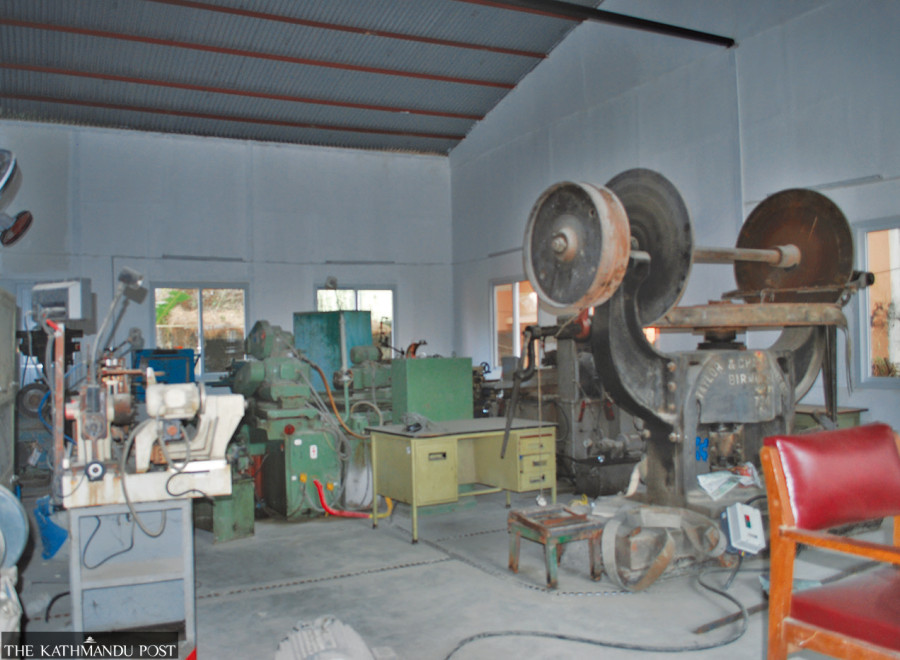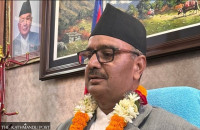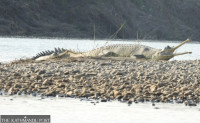National
Ailing Mint Division struggling to remain relevant
While Nepali coins are outsourced from foreign countries as it is cheaper, the 90–year–old office is now limited to melting confiscated gold.
Anup Ojha
Every time Rama Panta Bhattarai goes out for grocery shopping, she says she is shortchanged, quite literally, as nine out of ten times, no one returns the change if the value is one rupee or two.
Bhattarai, a resident of Pepsicola Town Planning, says she tries to make sure that she carries coins with her while going to buy household items, but that’s not possible all the time.
“I wonder if there are enough Re1 and Rs2 coins in circulation,” said Bhattarai. “No one returns coins.”
Saroj Adhikari, 23, who regularly commutes for work to New Road from his rented apartment at Kuleshwar, says no one gives him Rs2 change whenever he gives Rs20 as bus fare.
“The actual bus fare is Rs18 but the conductor always takes Rs20,” said Adhikari.
Bhattarai and Adhikari’s experience is an example of how the once ubiquitous Re1 and Rs2 coins have disappeared from the market, just as prices have gone up, leading to depreciation of the value of the money.
As Nepal Rastra Bank is preparing to circulate new Re1 coins from Wednesday, there are expectations that such metal currencies will be abundantly available in the market.
The Mint Division under the central bank on Tuesday published a public notice, saying that new Re1 coins will be circulated in the market Wednesday onwards.
It might sound absurd but officials said currently it costs Rs2.40 to mint a Re1 coin.
The Mint Division, earlier known as the Department of Mint, is one of the oldest government offices in Nepal, set up in 1932, was responsible for minting coins.
In 1984, the government handed over the Department of Mint to Nepal Rastra Bank.
In 2003 , Nepal Rastra Bank downgraded the department into a division and started the process of outsourcing the coins from foreign countries.
Until 2003, the department, at Sundhara, next to Dharahara, used to produce coins of different sorts and values—for circulation purposes as well as for other purposes like commemorations. It also used to mint medals that the government awarded to its citizens to recognise their contribution to the state and society.
According to Binod Raj Acharya, director of Mint Division, 2003 onwards, the Nepal Rastra Bank started outsourcing minting services through global tenders. As countries like England, Poland, China and South Africa among others participated in the bidding, the government then stopped taking services from the Department of Mint, saying minting coins inside the country was expensive.
Acharya says the Mint Division’s responsibility now has been limited to circulating coins that arrive from abroad.
The Re1 coins that the Mint Division is circulating from Wednesday were minted in Poland.
The Nepal Rastra Bank had called bids for minting 300 million pieces of Re1 denomination and 100 million pieces of Rs2 coins. Polish and English companies had won the contracts to mint Re1 and Rs2 coins, respectively.
Though the Mint Division is sending the coins to the market, due to depreciation of the value of the money, their transactional use is minimal.
According to Acharya, these days coins are mainly used for religious purposes and at cultural ceremonies such as marriages and other social functions.
“Coins are used for loose change rather than for buying something as things have become expensive,” said Acharya.
According to him, there is a demand for Nepalis coins mostly in India for religious purposes.
Nepal’s mint office in the past has produced coins of various denominations—Re1, 2, 5 and even Rs10. Also the division has minted commemorative coins on different special occasions. The last time, on February 13, 2019, the division had unveiled three new coins of Rs100, Rs1,000, and Rs2,500 denominations to commemorate centenarian Satya Mohan Joshi.
In its heyday until 1984, there were around 300 staffers with 100 artisans and technicians.
Once a rich agency, the mint division now has gone broke, with not even its own building. After the 2015 earthquake, it was relocated to the premises of Nepal Drugs Limited, where it has one big room that has been divided into 11 cabins. It has two warehouses, each built on 4.5 ana (1540 sq ft] of land, to store coins, and it has also constructed truss sheds to house the machinery including coin minting machines.
“Now we have just 20 staff with four technicians,” said Shyam Kumar Shrestha, a mechanical engineer at the division for the past 24 years.
“For the past two and a half years, we were almost without work because we didn’t have a place to install the machines after we shifted from Sundhara,” said Shrestha.
After the earthquake, the Sundhara building had to be demolished. With no new place to relocate, around 42 machines were exposed to sun and rain.
“With no proper care, corrosion and rust damaged the machines,” said Acharya.
The minting machines were first brought to Nepal during the time of Rana prime minister Juddha Shumsher, who served from September 1, 1932 to November 29, 1945.
Acharya says coins tell the history of a country and they hold a great cultural significance.
“I don’t think it was a wise decision to look for options to mint coins abroad looking at just the cost and benefits,” said Acharya. “We are working to revive the mint office’s lost glory.”
For the past two and a half years, the mint office’s job has been to melt the gold confiscated by authorities.
According to Acharya, some old machines have been repaired to operational level.
“We have already tested them all, and they function well. We have not added anything new except an electric motor to operate the old machines, which are both automatic and manual,” said Acharya. “We can mint coins here. We are planning to hire some retired artisans. Preserving this tradition of minting is also preserving our history and culture. This office must be saved from dying.”




 8.12°C Kathmandu
8.12°C Kathmandu.jpg)















